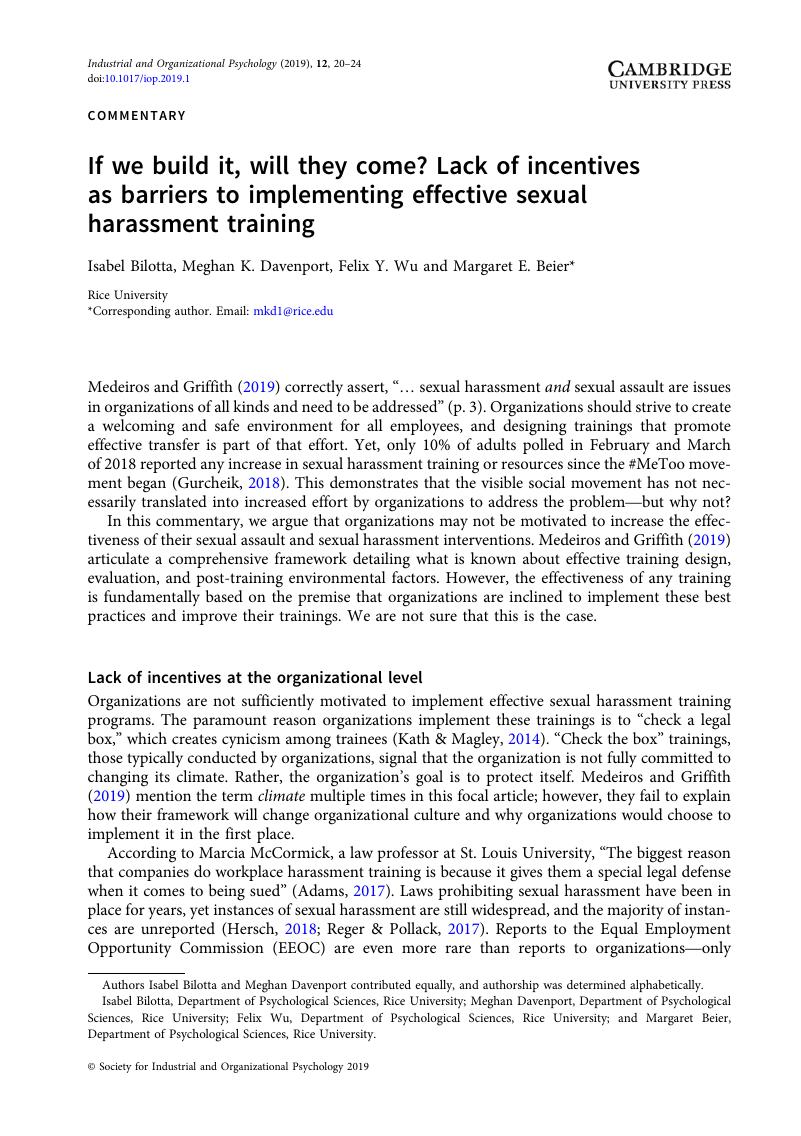Crossref Citations
This article has been cited by the following publications. This list is generated based on data provided by Crossref.
Zelin, Alexandra I.
and
Magley, Vicki J.
2020.
Handbook of Interpersonal Violence and Abuse Across the Lifespan.
p.
1.
Zelin, Alexandra I.
and
Magley, Vicki J.
2022.
Handbook of Interpersonal Violence and Abuse Across the Lifespan.
p.
3941.
Honorée, André L
Brady, Lisa L
and
Juban, Rusty L
2024.
Retaliation in workplace sexual assault: The effect of #MeToo on federal court cases in the United States.
International Journal of Discrimination and the Law,
Vol. 24,
Issue. 4,
p.
270.
Ortiz-Bonnin, Silvia
and
Blahopoulou, Joanna
2025.
Political Orientation and Attitudes Toward Sexual Harassment: The Moderating Role of Gender.
Journal of Interpersonal Violence,



